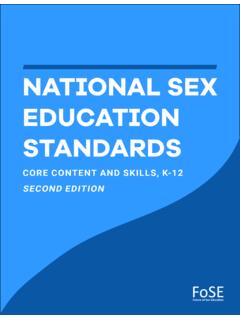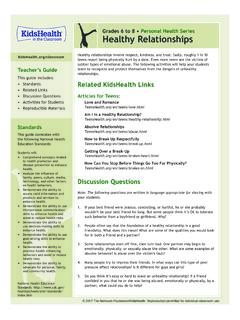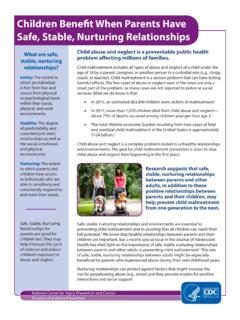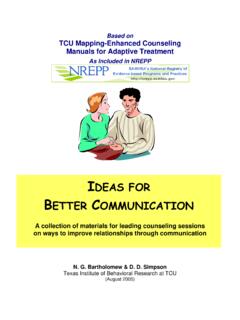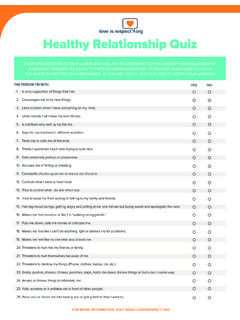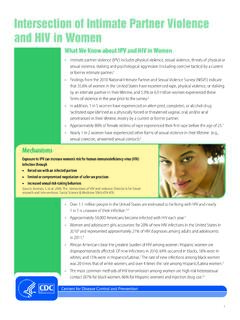Transcription of Healthy or Unhealthy Relationships? - Advocates for Youth
1 Healthy or Unhealthy Relationships? A Lesson Plan from Rights, Respect, Responsibility: A K-12 Curriculum Fostering responsibility by respecting young people s rights to honest sexuality PREPARATION FOR LESSON : Print out enough of the Healthy vs. Unhealthy relationship cards for half the class. Fold each one in half. Tape the Unhealthy and Healthy relationship signs on the front board with a good distance between them to create a continuum. Print out the exit slip Before You Go and cut them in half, so each student gets one half (which is one complete exit slip).
2 Tear off individual one-inch pieces of tape, enough for each sign in the Healthy vs. Unhealthy Relationships activity, and stick on a ledge or table end so they are available for students to take and use during the NOTE ABOUT LANGUAGE:Language is really important and we ve intentionally been very careful about our language throughout this curriculum. You may notice language throughout the curriculum that seems less familiar - using the pronoun they instead of her or him , using gender neutral names in scenarios and role-plays and referring to someone with a vulva vs.
3 A girl or woman. This is intended to make the curriculum inclusive of all genders and gender identities. You will need to determine for yourself how much and how often you can do this in your own school and classroom, and should make adjustments OBJECTIVES:By the end of this lesson, students will be able to: 1. Characterize, in their own opinion, at least one relationship trait as either Healthy or Unhealthy . [Knowledge, Skill, Attitude]2. Name at least two types of power differential in relationships, as well as their implication for the relationship . [Knowledge]3.
4 Describe at least two ways in which an Unhealthy relationship can become a Healthy one. [Knowledge]4. Apply their understanding of Healthy relationships to a couple represented in the media. [Knowledge, Skill]PROCEDURE:STEP 1: Ask, How many of you can think of a couple in your lives it could be family members, friends, siblings, whoever who you think are in a Healthy relationship ? After some students have raised their MATERIALS NEEDED: Two signs, one reading Healthy relationship and one reading Unhealthy relationship Enough of the 16 Healthy vs. Unhealthy Relationships cards for half the students in the class, prepared as described Homework: Healthy Relationships All Around Us one per student Exit slips Before You Go one per student Masking tape White board and markers Extra pencils in case students don t have their ownTIME: 50 MinutesTARGET GRADE: Grade 8 Lesson 3 NSES ALIGNMENT.
5 By the end of 8th grade, students will be able Compare and contrast the characteristics of Healthy and Unhealthy Explain the criteria for evaluating the health of a Describe the potential impacts of power differences such as age, status or position within DATE 12/8/2017hands, ask, How many of you can think of a couple you d consider to have an Unhealthy relationship ? Say, I bet if we described all of these relationships we would not agree about whether they were Healthy or Unhealthy . That s because we have all received a variety of messages about how people should behave in relationships.
6 These messages have a big impact on whether we see something as Healthy , Unhealthy or a mix. So today we re going to take a look at some things that can happen in relationships and whether you think these things mean a relationship is Healthy or Unhealthy . Break the students into pairs. Give each pair one of the Healthy vs. Unhealthy relationship cards. Ask them to talk together about whether they think what they have describes a Healthy relationship or an Unhealthy relationship . Tell them that once they ve decided, they should turn their sheet over and write down why they think it is Unhealthy , Healthy or somewhere in between.
7 Explain that they are Team One, and so should only complete the first line on the back of the sheet, not the second. Hold up a sheet to demonstrate as you are giving these them that once they ve finished writing their reason(s), they can bring their piece of paper up to the front of the room and tape it up where they feel it goes. Point out that there is a lot of space between the Unhealthy and Healthy relationship signs, so they can put their card under one of the signs, or somewhere in between if they feel like it has some Healthy or Unhealthy characteristic, but isn t completely one or the other.
8 After about 5 minutes, if all of the cards are not up, encourage students to stick their cards up on the board. Ask them to stay in their same pairs. (8 minutes)STEP 2: Starting at one end of the continuum, read each of the cards. Once you have read them all, ask the students to look at what s up on the board and comment on what they notice. Their responses will depend on where the cards have been placed (the activity is intentionally opinion-based, so the board will likely look different each time).For example, students might say, These all seem really Unhealthy , or None of the cards are either completely Unhealthy or Healthy .
9 Ask, Are there any up here that you would want to move? Which one(s) and why? As students indicate particular cards, take them down and read on the back why the pair of students who had each card chose to place it where they did. Ask whether that changed their view. Because this is an opinion-based activity, do not actually move any of the cards, just discuss a few. Note to the Teacher: Go through up to five of the cards, adjusting for student engagement in this part of the activity. If the discussion lags, stop after three; if it is still vibrant and connected, you may choose to continue beyond the five.
10 Here are some suggestions for a few in which there is a lot of grey area and about which you will likely have extensive discussion: A guy walks his girlfriend to school every morning, meets her for lunch every day, and picks her up to walk her home at the end of each afternoon. Healthy or Unhealthy Relationships? A Lesson Plan from Rights, Respect, Responsibility: A K-12 Curriculum A girl notices her girlfriend is getting a lot of attention from two different people at school. She goes up to each of them separately and warns them to stay away from her, or else. A couple has an agreement that they won t put passwords on their phones and can check each others texts and social media accounts whenever they feel like it.

